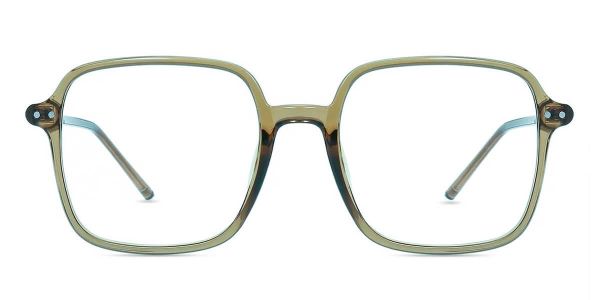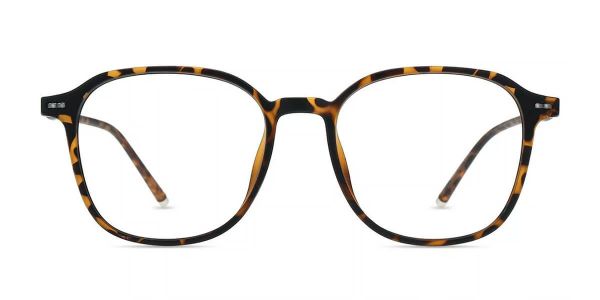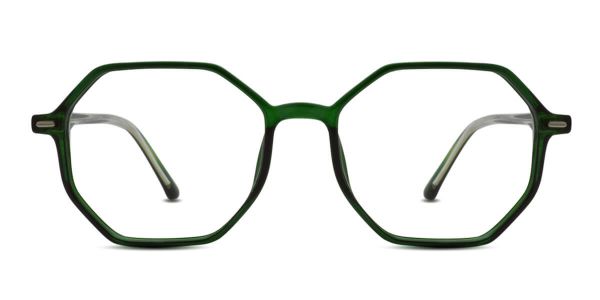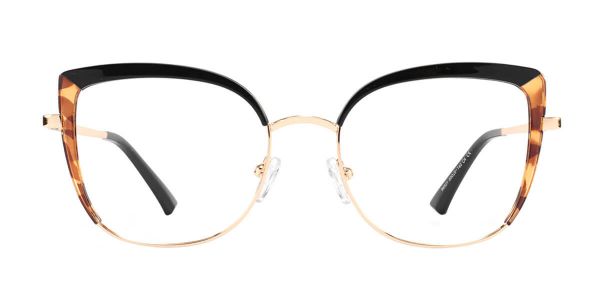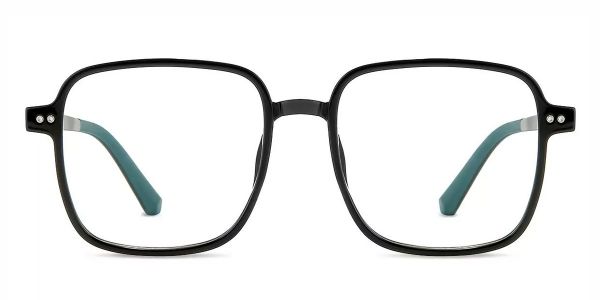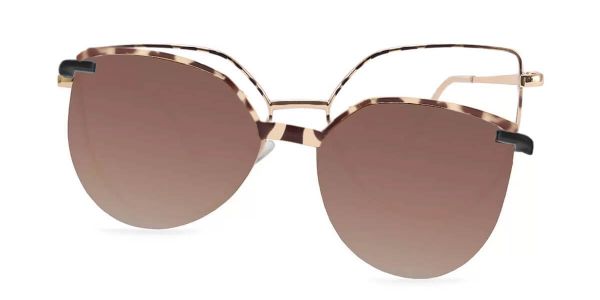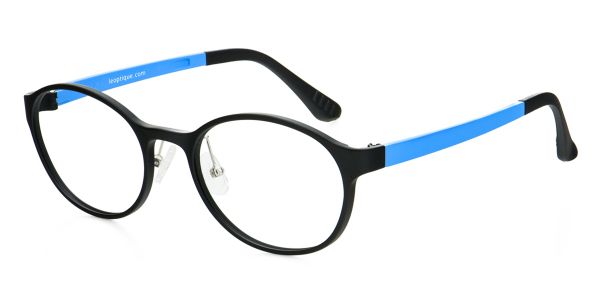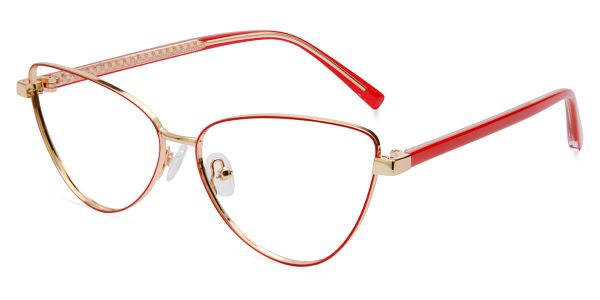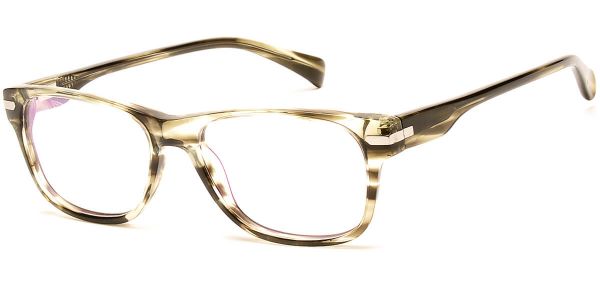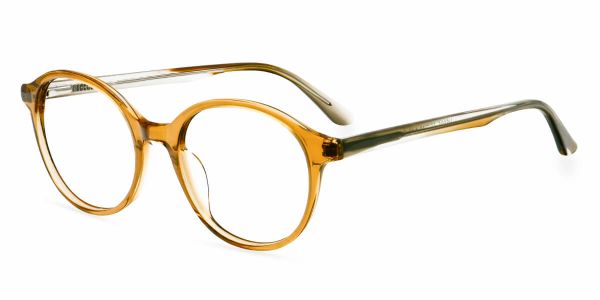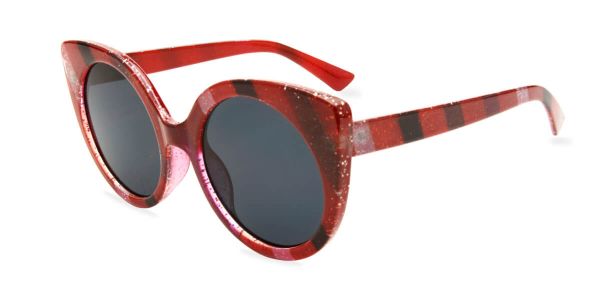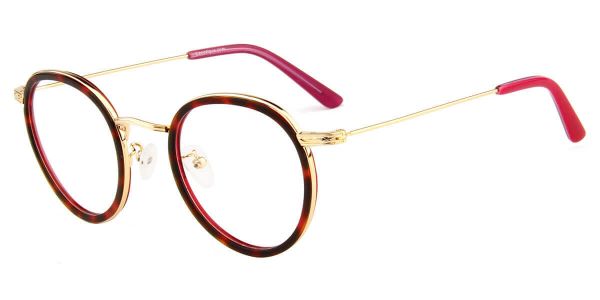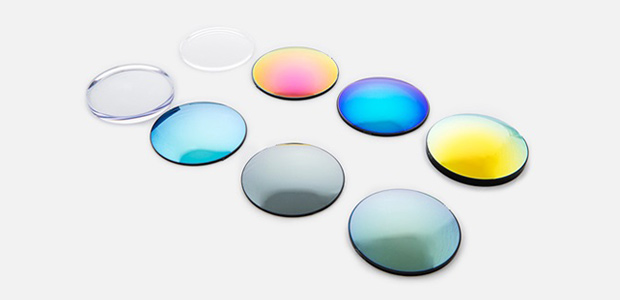
The lenses can be mainly divided into glasses lens, resin lens, PC lens and so on according to the different materials.
1. Glass lens
The main raw material of glass lens is optical glass, which has superior optical properties. Its light transmittance and mechanical, chemical property is good, and it has constant index and steady physical and chemical property. Secondly, the glasses lens has higher index, and the highest index usually used in lens application is 1.9. At last, the surface of glass lens has greater hardness, and it is more anti-scratch.
But the weight of glass lens is heavy due to the material issue, which affects the comfortable wearing in some degree. Besides, the glass lens itself has the feature of fragile, especially with the promotion of technology and craft process for resin lens, the usages of glass lens are less and less in recent years.
2. Resin lens
Resin is a sort of HC (hydrocarbon) secretion, which comes from plant, especially the conifers. And it is valued because of its special chemical constitution.
There are two kinds of resin, natural resin and synthetic resin. And the resin lens is to use the resin as raw material, with synthetic compound, process and polish to be lens. The advantage of resin lens is obvious, as it has light weight and more comfortable wearing. Secondly, the resin lens has excellent impact resistance, not so fragile and safer. Also the resin lens has good light transmittance, and it can meet special needs since the resin lens can be reprocessing easily. At last, with the creative and promoted coating technology, the resin lens has excellent anti-scratch function, so it becomes the mainstream of lenses in the market.
3. PC lens
PC lens also can be called space lens, and its chemical name is Polycarbonate. It is tough and not fragile, and it can prevent the lens breakage in the intense activities. At the same time, the PC lens is light-weighted and it is only 2g per cubic centimeter, it also has well beyond UV feature. The PC lens is used for children glasses normally because of its superior impact-resistance.
The lenses can be divided into daily use lens, protective lens and multi-focal lens according to the functions of usage.
Daily use lens
It means general single vision optical lens, which has no special function. And it is the most widely used optical lens.
Protective lens
1. Blue Blocker lens
Blue Blocker lens is kind of digital protective lens, which can block the harmful blue light but keep beneficial blue light effectively, and it reduces the damage to eyes from blue light. This lens is suitable to wear when watch TV, computer, PAD, hand phone and some devices with LED digital display.
2. Sunglass lens
Sunglasses absorb some wavelengths of the solar rays selectively with the metal powder, block out the uncomfortable strong light.
3. Polarized lens
It will reflect disordered light when the sun shines over the water, road, snowfield and some places. So to filter this dazzling light, we add vertical and special coating to the lenses, which is called polarized lens. It can prevent strong light effectively, which is not so glare even if you look at the sun directly. And this lens is mostly suitable for outdoor activities (like: driving, skiing or fishing).
4. Photochromic lens
Which is also called “photosensitive lens”, and it makes the color changed by adding silver halide substance to the lens itself or adding photochromic spin coating to the lens surface normally. This lens darkens with exposure to direct sunlight, and becomes clear again when indoors. You could automatically adjust the lens color according to the strength of sunlight/UV rays, one lens in dual purpose and it could block the UV rays automatically.
5. Sports lens
The security lens used in sports needs to pay attention to safety and protective value. This kind of lens generally refers to PC lens or KR super-tough lens of resin lens, it has good toughness and strong impact resistance, which is not fragile and safer.
Progressive lens
There are many focuses in one lens, the curvature of the lens front surface increases from top to bottom continuously, and the refractive power increases from the distance area on the top portion gradually and continuously, until it reaches the refractive diopter for reading use at the reading area on the bottom portion. You could use one pair of glasses to see distance, reading and the middle-range clearly. The progressive lens can be described as “zooming lens”, and wearing one pair of glasses can amount to many pair of glasses. For example, the reading and writing lens for students (which is suitable for the vision needs like look at the blackboard, reading and doing homework), the anti-fatigue lens for White-collar crowds (suitable for the vision switch from distance, middle and reading, take it easy when working), the dimensional progressive lens for middle-aged and aged people (freely customized curved surface, vision switch from distance, middle and reading, no head swinging).
Len coating
To achieve some new and unoriginal good function for the lens, we use physical and chemical methods on the lens surface, adding one or multi-layer optical coatings in appropriately thickness.
1. Hard coating: which is also called strength coating, and it is a coating layer that is mixed by metallic oxide (which has similar index as lens) with coupling agent. It has some characters like high hardness, high adhesive force and high transmittance, which effectively promotes the abrasion resistance of lens, and makes it not so easy to demould and becomes yellow, increases the lens lifespan.
2. Anti-reflective coating: which is also called refection reducing coating, and it uses the principle of interference of light, makes the interference of light reflected from the two sides of the coating, and cancels each other out, reduces or eliminates the light reflection on lens and then promotes the transparency of lens. In general, the anti-reflection effect is not good if use one layer of anti-reflective coating, as one layer coating only has the anti-reflection effect for the light in a particular band. So we always use double layers, three layers or more layers of anti-reflective coating to improve the anti-reflection effect for full wave bands of visible light, thus to make the lens to be more transparency.
3. Durable top coating: which is also called Oleophobic and Hydrophobic coating, commonly known as water resistant coating. It uses vapor deposition method and vaporizes the fluoride and some water-repellent materials, and makes them deposition on the lens surface. It uses the water-repellent materials and compact lens surface, reduces the contact area of water/oil with lens, and makes the water/oil to be hard to stick on the lens surface. It ensures the vision effect of lens, and makes it easy to clean at the same time.
4. Anti-static coating: it generally uses indium tin oxide (ITO) material and adds a layer of thin coating to the lens surface, which has great electrical conductivity and transparency. ITO coating can eliminate the static accumulated in the lens surface effectively, and cut down the dust adsorption on lens surface.

